Simon Woods
a 670-acre preserve in Scioto County
Simon Woods Preserve is composed of extremely steep forested hill-country and around 60 acres of mowed meadows and agricultural fields that earlier served as John Simon’s working farm. Today that homestead is the site for the Simon Sorghum Festival - a major event sponsored annually by the Arc of Appalachia. Simon Woods is heavily dominated by white oaks on the slopes, and chestnut oaks on the ridge tops. Approximately 320 acres of the forest, roughly ⅔ of the entirety, are fully mature forests, the result ofJohn R. Simon’s determination to protect his forest throughout his life and the philosophy of his parents before him. The oldest of the trees range between 80-150 years old, growing slowly on the steep, thin-soiled and rocky hillsides and majestic in height. Simon Woods is rich in high-quality water resources, with three headwater streams that drain off the ridgetops into Pond Creek. As Pond Creek exits Simon Farm, it winds eastward, eventually running through Tremper Mound before joining up with the Scioto River.
This project was funded with the help of a grant from Clean Ohio. Additional fundraising is needed for the site’s long-term stewardship
Photo: Mountain Laurel photo by Elijah Crabtree
Total Project Cost: $1,875,685
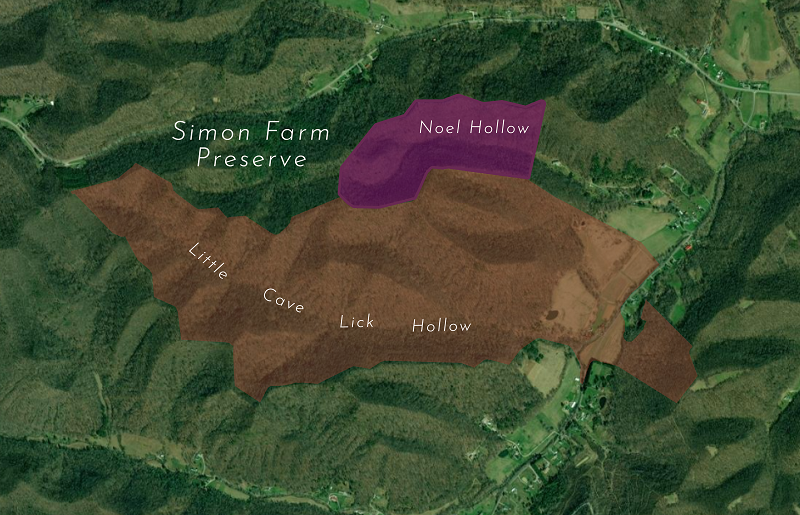

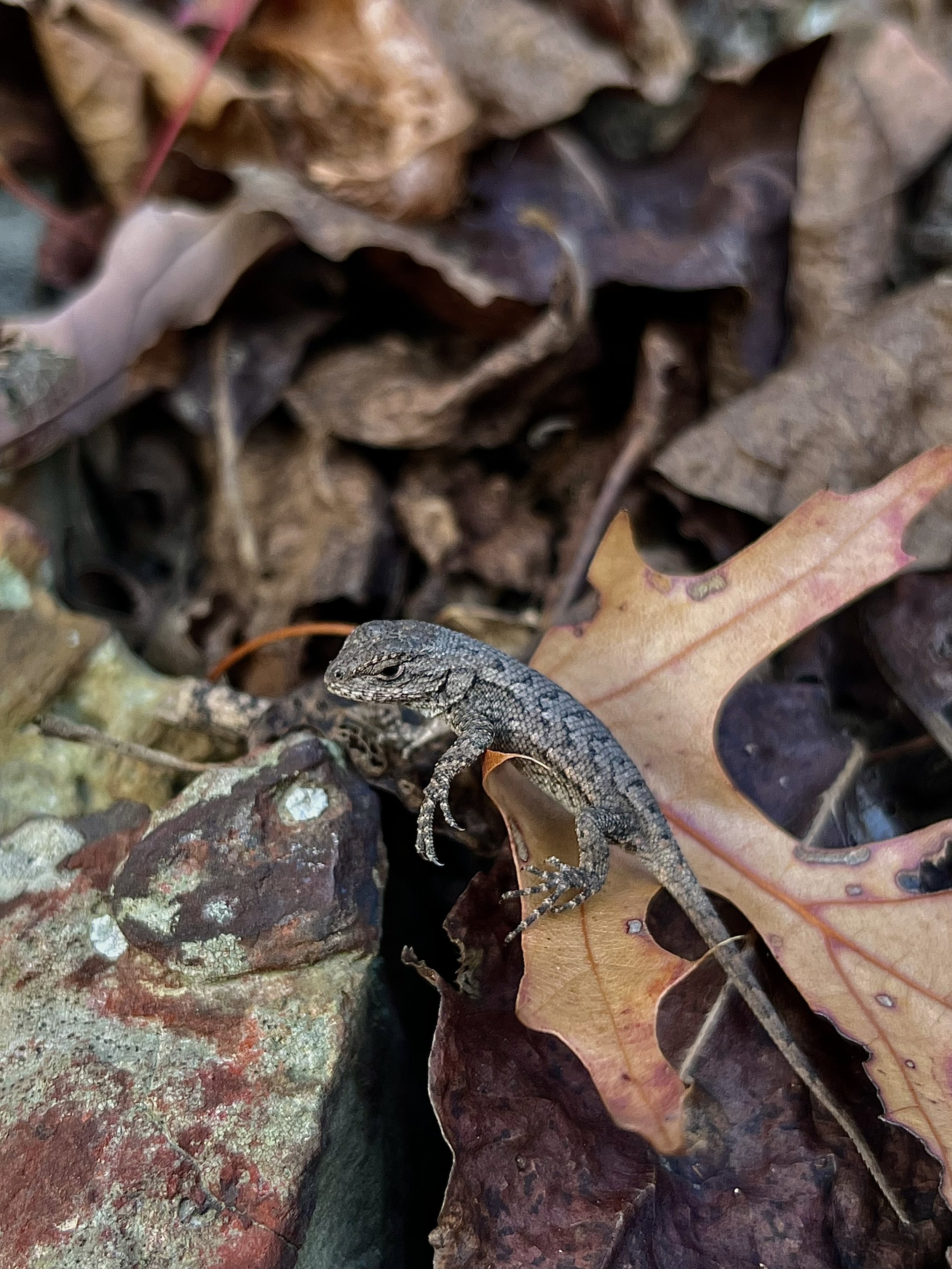

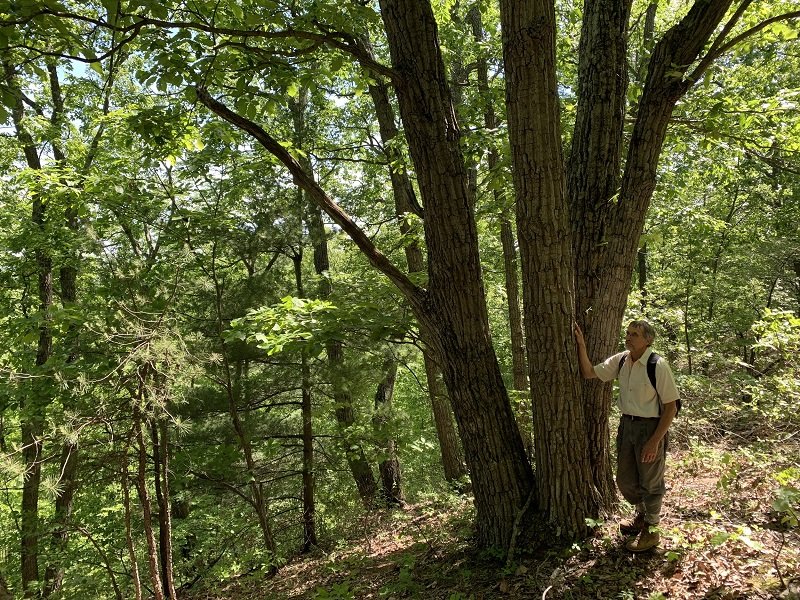
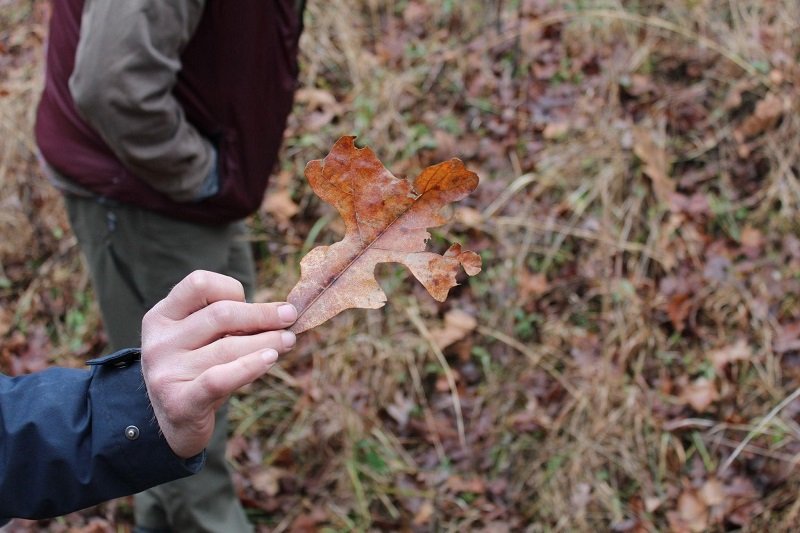
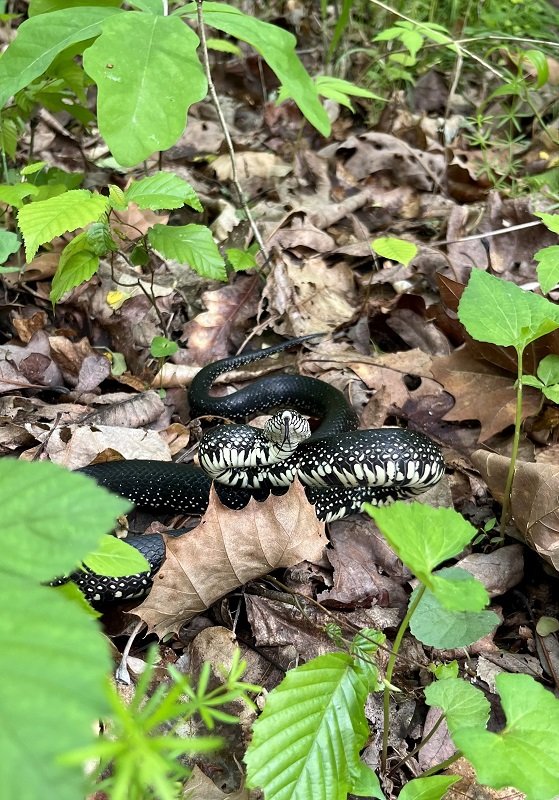
Simon Woods - A new Arc Preserve
Less than a mile west, as the crow flies from the sacred grounds of Tremper Mound, lies the new Simon Farm Preserve. It is named after John R. Simon, the man who earlier owned this land and first envisioned the preserve. Here is a forest so exemplary that its already-mature white oaks and chestnut oaks are well on their way to achieving old-growth status.
Simon Woods’ Natural History.
There is an unusual forest type on the Simon property best described as oak-pine barrens that occupies high and exposed elevations on narrow long ridgetops. Here the growing conditions are extremely hot and dry. We discovered that even in the springtime, these areas were sometimes found to be scorching hot. Plants found in these communities included chestnut oak, scarlet oak, black oak, blackjack oak, pitch pine, downy serviceberry, greenbrier, Vaccinium, and lichen-covered rocks.
Simon’s large and contiguous forest ecosystem is an important breeding ground for the many neotropical breeding bird species that need woodland habitats. Simon’s forest is even more critical for warblers that require large and unfragmented woodlands. These obligatory deep-woods warblers are declining in population due to habitat loss, and thus the added preservation of any wooded tract the size of Simon Farm helps sustain their populations. Key deep-woods warbler species breeding on the property include Kentucky warbler, worm-eating warbler, and hooded warbler.
Simon Woods’ Cultural History
The influx of settlers into Ohio in the early 19th century - families looking to utilize the forest bottoms for agriculture - was rapidly followed by profitable timber companies that were reinventing themselves with mechanical technologies and efficient railroad export. After Ohio became a state in 1803, the rich natural resources of the Ohio Territory were turned into market commodities more quickly than any other state in our fledgling nation’s history. Just one hundred years after statehood, Ohio’s forest cover had dropped from 95% to 10%, with devastating consequences for the wildlife and waterways. When the Dust Bowl hit the West in 1930, conservation-minded individuals nationwide rallied Americans to more sustainably steward their farmlands and forests.
When John was born in 1936, America’s forest conservation movement was already in full swing. John was 3 years old when Shawnee State Forest was founded (today our largest state forest) - its boundaries abutting right up to those of his father’s farm. John would have witnessed how much of the topsoil had already washed off the hills, and he would have watched the state forest’s young trees, and the thin soils beneath them, begin to recover.
Given John’s sharp intelligence, he would have known that healthy intact forests were bonded to the fabric of Appalachian life and that forests needed to be protected as a historic Appalachian legacy. He believed in this principle so whole-heartedly that when, as an adult, one hundred acres of forest came up for sale directly across the farm, he bought it for the simple reason that he did not want to see a hill stripped of its forest anywhere within sight of his home.
In 2022, after much deliberation with trusted family members and friends, John made the decision to sell his beloved woods to the Arc. He then donated to the Arc - separately from the purchase - the historically-intact 6.4-acre 1864 rural homestead that had been occupied by four generations of his French ancestors. John Roger Simon made this gift of his homestead with retained life estate, and furthermore set up an endowment fund to help maintain it.
Expanding Simon Woods with Noel Hollow
As the Arc of Appalachia’s acquisition of Simon Farm took shape, John’s neighbor to the north, Brandon Hull, keenly observed the slow-paced process with interest and approval. Brandon, his wife Jeanna, and their young family live at the head of Noel Creek in the heart of Noel Hollow, adjoining Simon Woods on its northern border. Brandon and Jeanna generously offered to sell 95 acres of their forested hollow as an addition to the Simon Farm Preserve, bringing its total size to 670 acres.

